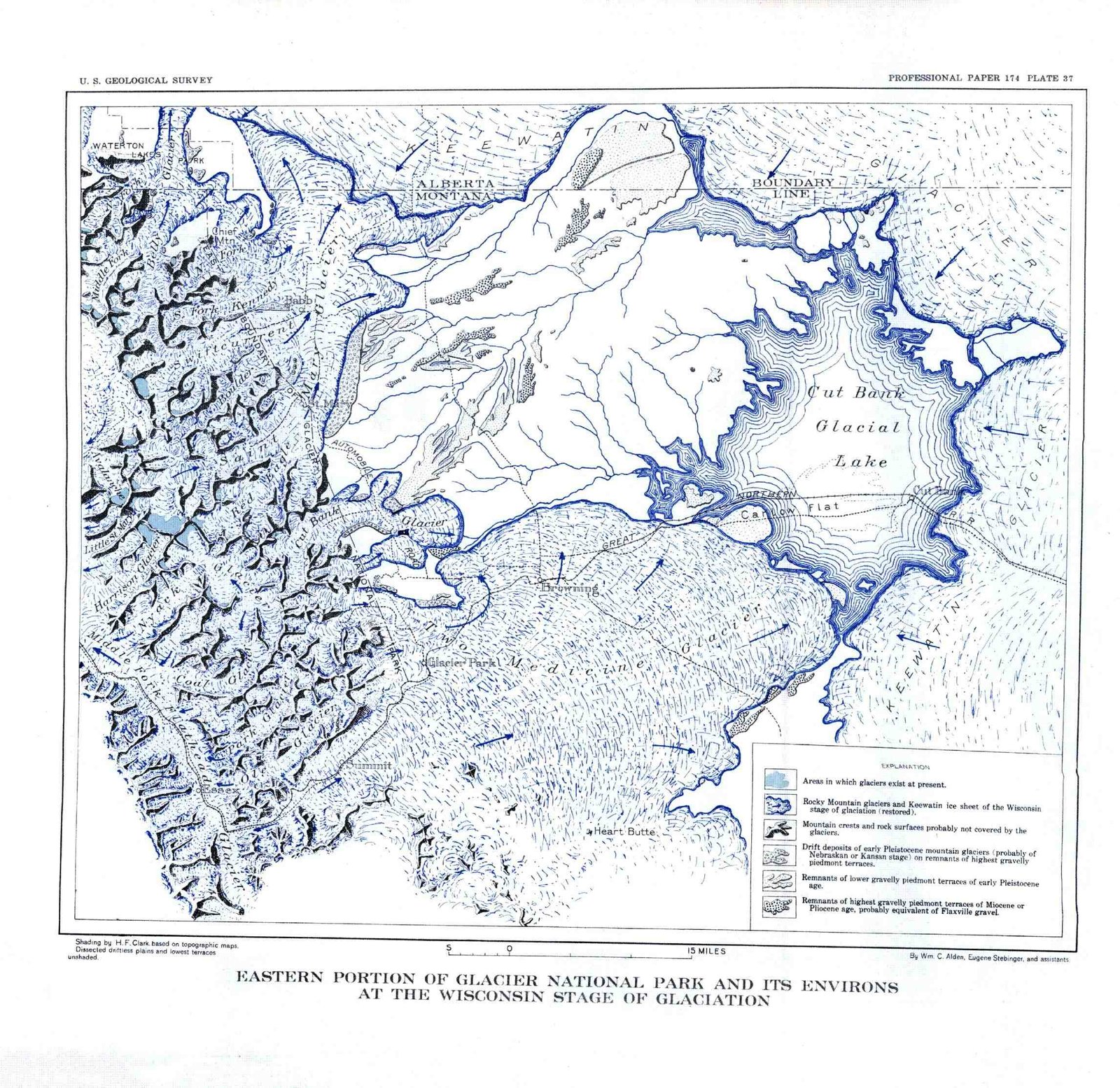The Aster Park Trail in Glacier National Park offers a moderate 4-mile round trip hike with stunning views of Two Medicine Lake and surrounding peaks. Located in the Two Medicine area, this trail gains 780 feet in elevation, culminating at the Aster Park Overlook. Hikers can expect diverse terrain, from lakeside paths to steep switchbacks, while enjoying panoramic vistas of the park’s majestic landscape.
What Makes Aster Park Trail Unique?

Aster Park Trail stands out for its blend of accessibility and breathtaking scenery. The trail begins at the South Shore Trailhead near Two Medicine Lake, guiding hikers through varied landscapes. As you ascend, you’ll encounter beaver ponds, dense forests, and eventually, the rewarding panoramic views from Aster Park Overlook.
Key features include:
- Moderate difficulty level (5.56 to 5.8 on a scale where 5-9.9 is moderate)
- 4-mile round trip distance
- 780 feet total elevation gain
- Diverse ecosystems and wildlife habitats
- Spectacular views of iconic Glacier National Park peaks
Where Is the Trailhead Located?

The Aster Park Trail begins at the South Shore Trailhead near Two Medicine Lake. This area is accessible by car during the summer months, typically from late May to early October, depending on weather conditions. The Two Medicine area is less crowded than some other parts of Glacier National Park, offering a more serene hiking experience.
To reach the trailhead:
- Enter Glacier National Park through the Two Medicine entrance
- Follow the road to the Two Medicine Lake area
- Park at the South Shore Trailhead parking lot
- Look for signs indicating the start of the Aster Park Trail
What Can Hikers Expect Along the Trail?
The Aster Park Trail offers a diverse hiking experience, with changing landscapes and viewpoints throughout the journey. Here’s what you can expect at different stages of the hike:
-
Lakeside Path: The trail begins with a pleasant walk along Two Medicine Lake, offering immediate scenic views.
-
Forest Section: You’ll then enter a forested area, providing shade and a chance to spot local wildlife.
-
Paradise Point: About 1 mile in, you’ll reach Paradise Point, offering views of Rising Wolf Mountain and Two Medicine Lake.
-
Beaver Ponds: The trail passes by beaver ponds, a great spot for wildlife viewing, especially moose.
-
Steep Ascent: The last 0.6 miles involve a challenging 500-foot climb with switchbacks.
-
Aster Park Overlook: The final destination rewards hikers with panoramic views of the Two Medicine valley and surrounding peaks.
What Wildlife Might Be Encountered?
Glacier National Park is home to diverse wildlife, and the Aster Park Trail area is no exception. Hikers should be prepared for potential wildlife encounters and know how to react safely. Here are some animals you might spot:
| Animal | Likelihood of Sighting | Best Viewing Areas |
|---|---|---|
| Moose | High | Beaver ponds |
| Black Bears | Moderate | Forested areas |
| Mountain Goats | Low | Higher elevations |
| Marmots | Moderate | Rocky areas near the overlook |
| Various Bird Species | High | Throughout the trail |
Remember to maintain a safe distance from all wildlife and never feed or approach animals. Carry bear spray and know how to use it.
What Are the Best Times to Hike Aster Park Trail?
The optimal time to hike Aster Park Trail depends on your preferences and the experience you’re seeking. Consider the following factors:
Season:
- Summer (July-August): Peak season with the best weather and trail conditions. Wildflowers are in bloom, but expect more crowds.
- Early Fall (September): Cooler temperatures, fall colors, and fewer people. Be prepared for potential early snow at higher elevations.
- Late Spring (Late May-June): Trail may still have snow patches, but offers solitude and the chance to see spring wildflowers.
Time of Day:
- Early Morning: Best for wildlife viewing, especially around the beaver ponds. Cooler temperatures and softer light for photography.
- Midday: Warmest temperatures and clearest views, but also the busiest time on the trail.
- Late Afternoon: Good for photography as the light softens, and wildlife becomes more active again.
What Gear Is Essential for the Hike?
Proper preparation is key to enjoying the Aster Park Trail safely. Here’s a list of essential gear:
- Sturdy hiking boots with good ankle support
- Layered clothing (moisture-wicking base layer, insulating mid-layer, waterproof outer layer)
- Backpack to carry supplies
- Plenty of water (at least 2 liters per person)
- High-energy snacks and lunch
- Sun protection (hat, sunglasses, sunscreen)
- Bear spray (and knowledge of how to use it)
- First aid kit
- Map and compass (or GPS device)
- Trekking poles (optional, but helpful for the steep sections)
How Challenging Is the Final Ascent to Aster Park Overlook?
The final 0.6 miles to Aster Park Overlook present the most challenging part of the hike. Here’s what to expect:
- Elevation Gain: Approximately 500 feet in this short distance
- Terrain: Steep switchbacks with some rocky sections
- Difficulty: Moderate to strenuous, requiring good physical fitness
- Time: Allow 30-45 minutes for this section, depending on your pace
Tips for managing the final ascent:
1. Take frequent short breaks to catch your breath
2. Stay hydrated and fuel your body with snacks
3. Use trekking poles to assist with balance and reduce strain on your knees
4. Wear sturdy boots with good traction to handle the terrain
What Are the Most Spectacular Views Along the Trail?
The Aster Park Trail offers numerous scenic viewpoints throughout the hike. Here are some of the most spectacular views you’ll encounter:
-
Two Medicine Lake: Visible from the start of the trail, offering reflections of surrounding peaks.
-
Paradise Point: About 1 mile in, providing views of:
- Rising Wolf Mountain
- Two Medicine Lake
-
Sinopah Mountain
-
Beaver Ponds: A serene area with potential wildlife sightings and mountain reflections.
-
Aster Park Overlook: The grand finale, offering panoramic views of:
- Two Medicine Lake valley
- Flinsch Peak
- Dawson Pass
- Rising Wolf Mountain
- Painted Tepee Peak
- Sinopah Mountain
- Lone Walker Mountain
- Mt. Helen
How Should Hikers Prepare for Changing Weather Conditions?
Glacier National Park’s weather can be unpredictable, especially at higher elevations. To ensure a safe and enjoyable hike on the Aster Park Trail, follow these preparation tips:
-
Check the forecast: Review weather predictions for the Two Medicine area before your hike.
-
Layer your clothing: Use the following system:
- Base layer: Moisture-wicking material
- Mid layer: Insulating fleece or wool
-
Outer layer: Waterproof and windproof jacket
-
Pack extra gear: Bring additional items such as:
- Rain poncho or compact umbrella
- Warm hat and gloves
-
Emergency space blanket
-
Be aware of thunderstorm risks:
- Start early to avoid afternoon thunderstorms
- Know how to identify approaching storms
-
Have a plan to descend quickly if necessary
-
Stay hydrated: Changing weather can affect your body’s water needs.
-
Protect against sun exposure: Use sunscreen, sunglasses, and a hat, even on cloudy days.
By following these guidelines, hikers can safely enjoy the stunning beauty of the Aster Park Trail in Glacier National Park, regardless of weather fluctuations.
References:
1. [Aster Park Overlook – Hiking in Glacier National Park]
2. [Aster Falls & Paradise Point: Glacier National Park Hike]
3. [Paradise Point, Aster Falls, Aster Park]